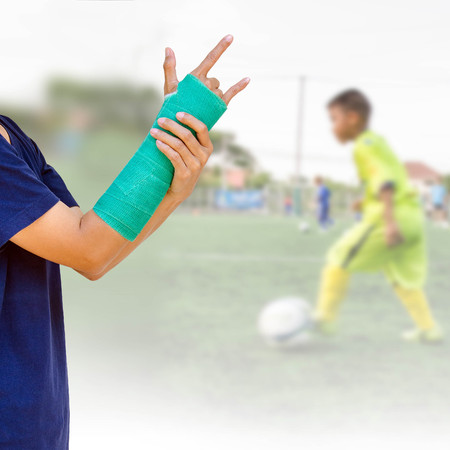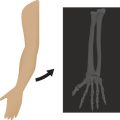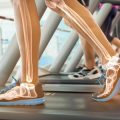Understanding Soft Tissue Mobilisation
Soft tissue mobilisation (STM) stands as a cornerstone technique within the realm of British sports medicine, particularly in high-impact sports such as football and rugby. This hands-on therapeutic approach involves the skilled manipulation of muscles, ligaments, fascia, and tendons to alleviate pain, enhance mobility, and promote optimal recovery following injury. At its core, STM draws on principles rooted in anatomy and biomechanics, aiming to restore functional balance to compromised tissues and address common issues such as adhesions or scar tissue formation. In the context of UK football and rugby, where athletes are routinely exposed to intense physical demands and a high incidence of musculoskeletal injuries, soft tissue mobilisation has become an indispensable component of both acute injury management and long-term rehabilitation strategies. British practitioners often integrate evidence-based STM techniques with a broader multidisciplinary framework, reflecting the unique demands and cultural expectations of professional sport in the UK. Through targeted intervention, STM not only accelerates return-to-play timelines but also supports athlete wellbeing by reducing the risk of recurrent injuries—a critical consideration given the competitive nature of football and rugby at all levels across the country.
2. Prevalence and Nature of Sports Injuries in UK Football and Rugby
Football and rugby are two of the most popular sports in the United Kingdom, each with distinct playing styles, physical demands, and cultural significance. Both sports, however, share a high prevalence of soft tissue injuries due to their dynamic nature, frequent contact, and intense competition. Understanding the typical injury patterns in these sports is crucial for tailoring effective soft tissue mobilisation strategies.
Common Soft Tissue Injuries in UK Football and Rugby
The majority of injuries sustained in both football and rugby involve muscles, tendons, and ligaments. These often result from sudden changes in direction, acceleration, deceleration, tackling, or collisions. However, the distribution and mechanisms of these injuries can differ based on the specific requirements and culture of each sport.
| Sport | Frequent Soft Tissue Injuries | Typical Mechanism | Cultural Considerations |
|---|---|---|---|
| Football (Soccer) | Hamstring strains Groin pulls Ankle sprains Quadriceps contusions |
Sprinting Kicking Tackling Sudden pivoting |
Emphasis on agility and speed “Playing through pain” mentality |
| Rugby (Union & League) | Shoulder sprains Knee ligament injuries (e.g., MCL/ACL) Calf strains Contusions (bruises) |
Tackles Scrums Mauls/Rucks Lateral movements under pressure |
Cultural valorisation of toughness Frequent physical contact expected |
The Physical Demands: A Comparative Perspective
In football, the focus on speed, agility, and technical skill leads to a higher incidence of muscle strains—particularly in the lower limbs. Meanwhile, rugby’s heavy physicality results in a broader spectrum of soft tissue injuries affecting both upper and lower body regions. The regular engagement in tackles and scrums exposes players to repetitive trauma and complex multi-structure injuries.
Cultural Nuances Shaping Injury Profiles
The sporting ethos in the UK often encourages athletes to “push through” minor injuries for the sake of team performance or tradition, sometimes delaying appropriate treatment. This cultural context underlines the importance of early recognition and intervention—such as soft tissue mobilisation—to reduce recovery time and prevent chronic issues. In summary, a nuanced understanding of both the physiological demands and cultural attitudes inherent to UK football and rugby is essential for effective injury management.

3. Techniques of Soft Tissue Mobilisation in the UK
Soft tissue mobilisation (STM) has become a cornerstone in the management and rehabilitation of sports injuries within the context of UK football and rugby. British practitioners employ a range of evidence-based manual therapy techniques, each tailored to address the unique physical demands and injury patterns seen in these high-intensity sports.
Sports Massage
Sports massage remains one of the most popular and widely adopted STM techniques across the UKs sporting landscape. This approach involves the systematic manipulation of soft tissues with specific objectives: reducing muscle tension, enhancing circulation, and promoting recovery. In both football and rugby, therapists use pre-event massages to prepare athletes for play, while post-event treatments focus on decreasing delayed onset muscle soreness (DOMS) and accelerating tissue repair. The technique is adapted based on player needs, injury history, and the particular phase of the season.
Myofascial Release
Myofascial release is another favoured strategy among UK sports therapists, particularly for addressing restrictions in connective tissue that can impede movement and contribute to recurrent injuries. Using sustained pressure and gentle stretching, practitioners aim to restore normal fascial length and pliability. This technique is especially relevant in rugby, where repetitive impacts often lead to fascial adhesions around the shoulders, hips, and lower back. Football players may benefit from myofascial release targeting the hamstrings, calves, and groin—common sites of strain in fast-paced matches.
Mobilisation Strategies
Joint and soft tissue mobilisations are integral to comprehensive injury management programmes in British sport. Mobilisation techniques encompass graded passive movements applied to joints or surrounding tissues to improve range of motion, alleviate pain, and facilitate functional recovery. In football, ankle and knee mobilisations are frequently used following ligament sprains or after periods of immobilisation. Rugby practitioners often focus on spinal and shoulder joint mobilisations due to the contact-heavy nature of the sport. These interventions are guided by clinical assessment and best-practice guidelines established by organisations such as The Chartered Society of Physiotherapy.
Integration with Multidisciplinary Care
A distinctive feature within UK practice is the integration of STM techniques into broader multidisciplinary care pathways. Manual therapies are rarely delivered in isolation; instead, they complement physiotherapy exercises, strength and conditioning programmes, and return-to-play protocols. Regular communication between physiotherapists, sports doctors, coaches, and players ensures that STM techniques are personalised and optimally timed within the athlete’s rehabilitation journey.
Cultural Considerations in Technique Selection
The choice and application of STM methods in UK football and rugby also reflect cultural preferences and regulatory frameworks. For example, there is an emphasis on safeguarding athlete welfare through clear consent procedures and adherence to professional standards set by bodies like The Health & Care Professions Council (HCPC). Moreover, ongoing professional development ensures that therapists remain updated with emerging evidence regarding technique efficacy—an approach deeply embedded in British sporting culture.
In summary, soft tissue mobilisation techniques employed by UK practitioners are underpinned by a blend of tradition, empirical evidence, and an acute awareness of sport-specific needs. This holistic approach not only enhances recovery but also serves as a vital tool in injury prevention for footballers and rugby players competing at every level across Britain.
4. Integrating Soft Tissue Mobilisation in Injury Management
Incorporating soft tissue mobilisation (STM) into injury management protocols is now a cornerstone of sports medicine practice across UK football and rugby clubs. The collaborative nature of these professional environments fosters a multidisciplinary approach, ensuring that STM is utilised efficiently alongside other rehabilitative modalities. Physiotherapists, sports therapists, strength and conditioning coaches, and medical staff work together to develop bespoke rehabilitation plans tailored to the specific demands of each sport and individual athlete.
The Role of Multidisciplinary Teams
UK football and rugby clubs typically operate with multidisciplinary teams (MDTs), where communication between practitioners is crucial for optimal player outcomes. STM is often integrated early in the rehabilitation process, especially during the acute and sub-acute phases of soft tissue injuries such as muscle strains, ligament sprains, or contusions. The MDT will assess the player’s injury severity, functional limitations, and stage of healing before deciding on the type and timing of STM interventions.
Integration Protocol: From Assessment to Return-to-Play
| Rehabilitation Stage | Soft Tissue Mobilisation Focus | Collaborative Actions |
|---|---|---|
| Acute Phase | Pain reduction, swelling control, gentle mobilisation | Physiotherapist coordinates with medical staff for clearance; therapist applies manual therapy under close monitoring |
| Sub-Acute Phase | Restoring range of motion, reducing adhesions, promoting circulation | Sports therapist integrates STM with progressive exercise; feedback shared with coaches for load management |
| Functional Rehabilitation | Optimising muscle function, addressing compensatory patterns | Strength coach adapts drills; STM used pre- and post-training to enhance recovery and tissue adaptation |
| Return-to-Play | Injury prevention strategies, ongoing maintenance | Continuous monitoring by MDT; STM incorporated in routine care to minimise re-injury risk |
Key Considerations within UK Football and Rugby Clubs
The unique physical demands and high-contact nature of UK football and rugby necessitate a dynamic approach to injury management. Soft tissue mobilisation is not viewed as an isolated treatment but as part of an integrated continuum—supporting players’ return to peak performance while minimising the risk of recurrence. Regular interdisciplinary meetings ensure protocols are evidence-based and adjusted according to clinical findings and player feedback. This structured yet adaptable integration of STM reflects best practice in British sports medicine, aligning clinical theory with real-world application.
5. Perspectives from UK Sports Professionals
Within the context of UK football and rugby, the opinions and experiences of sports professionals offer valuable insight into the practical application of soft tissue mobilisation (STM). Physiotherapists, athletic trainers, and players each bring a unique perspective shaped by their roles, responsibilities, and daily interactions with sports injuries.
Insights from Physiotherapists
Physiotherapists working in elite clubs such as those in the Premier League or Gallagher Premiership frequently regard STM as an integral element in both acute injury management and ongoing rehabilitation. According to many practitioners, STM techniques—ranging from myofascial release to trigger point therapy—are pivotal for reducing muscle tension, improving circulation, and enhancing tissue pliability. However, they also highlight challenges such as limited time during congested fixture periods and the need to balance manual therapy with other modalities like exercise prescription and electrotherapy.
Views of Athletic Trainers
Athletic trainers in the UK often emphasise the importance of rapid recovery to maintain squad depth and competitive advantage. They report that STM is routinely used post-match or after intensive training sessions to address delayed onset muscle soreness (DOMS) and minor strains. Despite its benefits, trainers note practical obstacles including resource constraints—especially at lower league clubs—and variations in player responsiveness. There is also recognition of the need for ongoing professional development to stay abreast of emerging techniques and evidence-based practice.
Players’ Experiences
From a player’s viewpoint, STM is highly valued not only for its physical effects but also for its psychological reassurance. Many athletes describe feeling ‘freer’ or ‘looser’ after treatment, contributing to confidence when returning from injury. Nonetheless, some express concerns about over-reliance on passive therapies and advocate for a more holistic approach that combines manual work with active rehabilitation strategies.
Key Challenges Identified
- Time Constraints: Especially prevalent during periods of fixture congestion or tournament play.
- Resource Availability: Disparities exist between top-flight teams and grassroots clubs regarding access to skilled therapists.
- Evidence Translation: Bridging the gap between research findings and practical implementation remains a constant challenge.
Towards Best Practice in the UK Context
The collective experience of UK sports professionals suggests that while STM is widely acknowledged as beneficial for sports injury management, optimal outcomes are achieved when it is integrated with comprehensive rehabilitation programmes. Ongoing education, interdisciplinary collaboration, and adaptation to the demands of British football and rugby seasons are seen as essential components for successful implementation.
6. Cultural and Organisational Considerations in UK Sport
Understanding the Role of Sporting Culture
The adoption and delivery of soft tissue mobilisation in UK football and rugby are deeply entwined with the unique sporting culture prevalent across the nation. In both professional and grassroots settings, there is a longstanding emphasis on resilience, rapid recovery, and returning athletes to play as quickly as possible. This pragmatic approach fosters an environment where evidence-based therapeutic interventions such as soft tissue mobilisation are highly valued, yet also subject to scrutiny regarding their efficacy and alignment with traditional values.
Influence of Governing Bodies
Governing bodies such as The Football Association (FA), Premiership Rugby, and Sport England play a pivotal role in shaping medical standards and clinical practices within clubs. These organisations provide guidelines on injury prevention, rehabilitation protocols, and continuing professional development for therapists. Their endorsement or scepticism towards soft tissue mobilisation can significantly affect its integration into club routines. For instance, FA-endorsed courses or Premiership Rugby’s medical best practice frameworks often encourage the incorporation of manual therapy as part of a multidisciplinary approach, ensuring that practitioners remain up-to-date with current research and methodologies.
Club Infrastructure and Multidisciplinary Teams
The infrastructure within UK clubs—ranging from elite academies to semi-professional setups—also determines how effectively soft tissue mobilisation is delivered. Premier League football clubs and top-tier rugby teams typically employ multidisciplinary teams comprising physiotherapists, sports massage therapists, strength and conditioning coaches, and medical doctors. This collaborative environment enables tailored interventions based on individual athlete needs. Conversely, resource limitations at lower league or community clubs may restrict access to specialised therapists or advanced equipment, leading to variability in the quality and frequency of soft tissue mobilisation provided.
Barriers and Opportunities
Cultural perceptions about the value of manual therapies, time constraints during fixture congestion, and financial considerations can act as barriers to widespread implementation. However, increasing awareness of the scientific rationale behind soft tissue mobilisation—often disseminated via workshops, conferences, or guidance from governing bodies—has gradually shifted attitudes. Clubs are more likely to invest in these services when presented with robust evidence demonstrating benefits such as reduced injury recurrence and enhanced player performance.
Towards a Unified Approach
In summary, the uptake and delivery of soft tissue mobilisation in UK football and rugby are shaped by a dynamic interplay between sporting culture, regulatory frameworks, and club-specific resources. As UK sport continues to professionalise and embrace interdisciplinary care models, there is growing potential for soft tissue mobilisation to become an integral component of injury management strategies across all levels of play.


